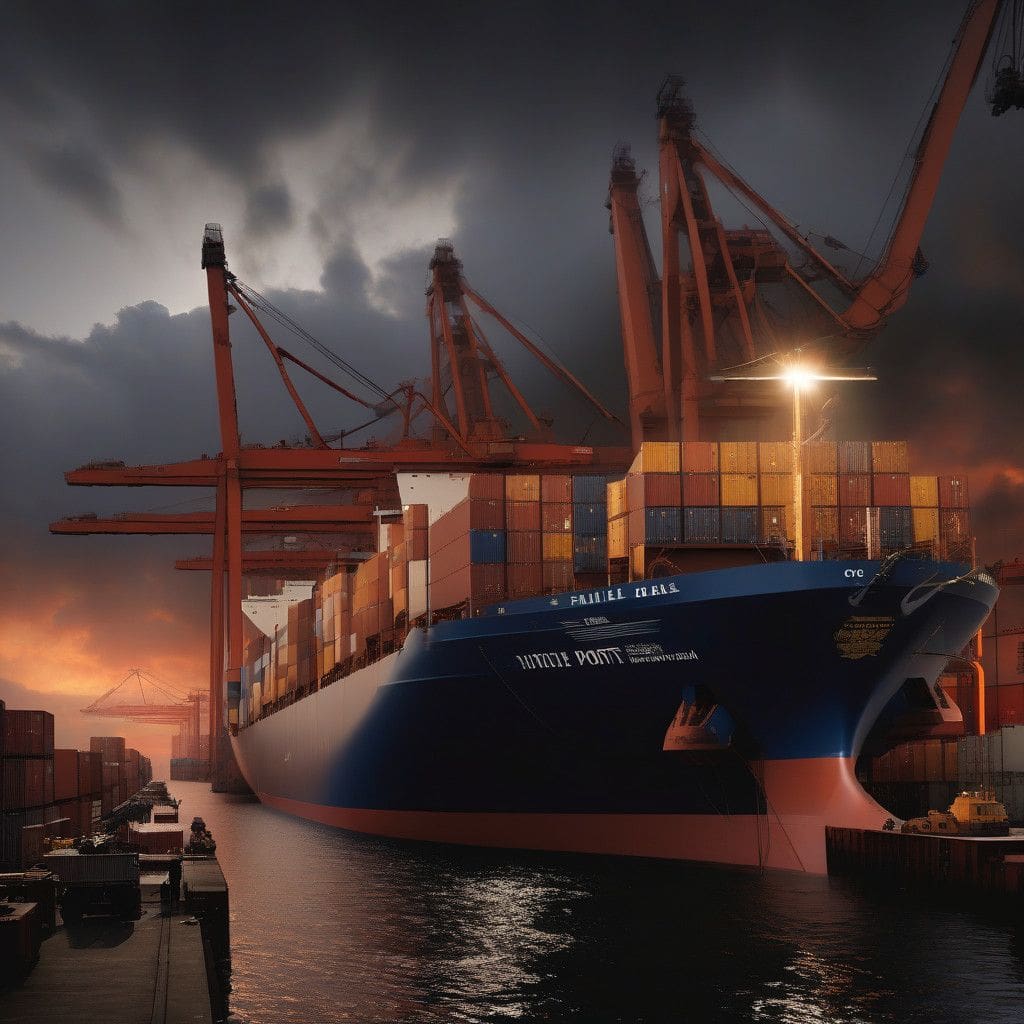In a historic move that has not been seen in nearly five decades, dockworkers at every major port along the US East and Gulf coasts have initiated a strike, halting operations at 36 significant shipping hubs. This unprecedented action is poised to cause economic repercussions across various sectors, potentially leading to losses estimated between $3.8 billion to $4.5 billion daily, according to analysts from JPMorgan Chase & Co.
The strike commenced at 12:01 AM on Tuesday, with the International Longshoremen’s Association (ILA) leveraging their collective bargaining power in demands for higher wages and changes to contracts regarding automation. For context, these 36 ports are crucial, handling approximately half of all US trade volumes. Their closure not only stops container operations but also affects auto shipments, although energy supplies and bulk cargoes will continue to flow under certain exceptions made for military goods.
The ramifications of this labor dispute extend beyond immediate operational disruptions. Grace Zwemmer from Oxford Economics noted that if the strike persists for a week, shipping congestion could take roughly a month to resolve. This situation not only threatens the flow of goods but also places a strain on an economy already grappling with inflation and supply chain challenges.
In the stock market, shares of major shipping lines, including A.P. Moller-Maersk and Hapag-Lloyd, experienced a dip following the news of the strike, reflecting investor concerns about potential delays and increased shipping costs. The impact is especially critical given that the last comparable strike in 1977 left lasting scars on the industry.
Ship operators and terminal operators, represented by the US Maritime Alliance (USMX), have pointed fingers at the ILA, accusing the union of an unwillingness to negotiate in good faith since discussions stalled in June. Meanwhile, President Joe Biden has remained adamant that this labor dispute is a matter of collective bargaining, refraining from invoking national security measures to intervene. However, considerable pressure has mounted from trade groups, including the US Chamber of Commerce, which has urged the administration to facilitate a quick resolution.
The economic stakes involved are significant. Estimates from the National Association of Manufacturers suggest that daily trade jeopardized totals $2.1 billion, with potential implications for GDP reduction reaching as high as $5 billion on certain days. Jay Timmons, president of NAM, has characterized the strike’s potential impact as devastating for both manufacturers and consumers. “The president can protect manufacturers and consumers by exercising his authority, and we hope he will act quickly,” Timmons urged.
Despite the call for intervention by many business leaders, the Teamsters union has responded by advocating for non-interference from the Biden administration, expressing concern that any forced resumption of operations would result in slower processing of containers, thus prolonging delays.
This strategic work stoppage arrives amid the backdrop of an upcoming presidential election, perhaps serving as a potent reminder of the ongoing tension between labor rights and the economy’s overall health. With various political leaders weighing in, the implications are bound not only to reverberate through the dockyards but also to ripple through retail, transport, and manufacturing sectors.
As the strike unfolds, many importers and businesses have already started diverting their shipments to alternative routes, including West Coast ports, to mitigate potential disruptions. New York Governor Kathy Hochul has publicly stated that the state has worked tirelessly to ensure essential products remain accessible in local grocery stores and medical facilities, amid fears of prolonged delays.
The ultimate resolution of this strike remains uncertain. Nevertheless, Transportation Secretary Pete Buttigieg has emphasized the importance of harmony among carriers, shippers, and workers for restoring normal operations, remarking, “There’s really no substitute for the ports being up and running.”
In this age where the interconnectedness of global supply chains is ever more evident, this massive strike will once again highlight the significance of labor relations and their capacity to shape economic landscapes. As this story develops, the eyes of business leaders and policymakers alike will be keenly focused on the evolving negotiations.












